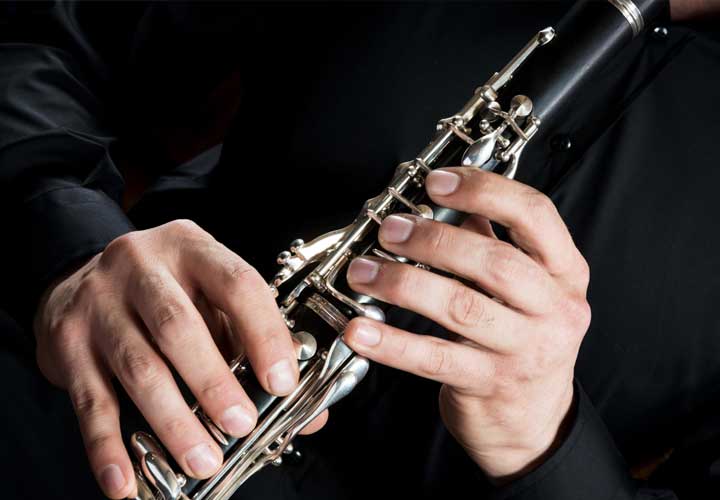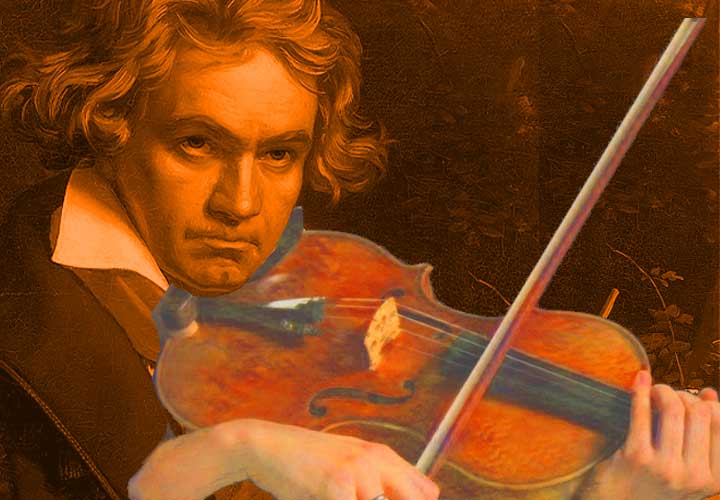![Code breaker Alan Turing at the age of 16 and 1748 portrait of code maker J.S. Bach [Source:Wikipedia]](/discover/turing_bach.jpg)
Alan Turing played an important role in the breaking the the Nazi Enigma codes during World War 2. His life was made into the 2014 film, ‘The Imitation Game.’
It has now also been turned into an opera, ‘The Life and Death(s) of Alan Turing’ by Justine F Chen to a libretto by David Simpatico, which will premiere on 23rd March in Chicago's Harris Theater for Music and Dance.
Continue reading...

A question often asked by first-time concert goers is—where were the saxophones? The saxophone is one of the most popular instruments. You see them everywhere. So why aren't they part of the standard orchestral line-up?
A common myth is that it doesn't blend with the other instruments. It's loud, abrasive and honky—it just sticks out too much.
But in fact, nothing could be further from the truth. The true reason the sax isn't a fully-fledged member of the orchestra is a story full of intrigue, politics and prejudice.
Continue reading...

The music of Frédéric Chopin is a pillar of the piano repertoire, including some of the most brilliant, and challenging, music ever written for the instrument ranging from showy polonaises through to whirlwind scherzos – not to mention his notoriously demanding collection of virtuoso etudes. Unlike the other great piano composers of the 19th century, however, Chopin also composed a surprisingly large number of works which can be tackled even by intermediate players (roughly equivalent to grades 5–6 according the UK’s ABRSM ranking system) – although bear in mind that even Chopin’s “easiest” pieces require plenty of musicality and interpretative finesse to bring off convincingly. We’ve chosen ten of our favourites below, ranked roughly in order from the easiest to most difficult.
Continue reading...


![Beyoncé alongside the classical artist she beat to become the greatest ever Grammy winner [Source: Wikipedia]](/discover/beyonce_solti.jpg)
On 5th February the music industry’s 65th Grammy Awards were announced in a glitzy ceremony in Los Angeles. Amongst the categories, the most distinguished include best record, which went to Lizzo’s, ‘About Damn Time’; best Album, won by Harry Styles’ ‘Harry’s House’; and best song, which went to to Bonnie Raitt’s ‘Just Like That.’
But it was Beyoncé that made all the post-awards headlines. Her four wins, for Best Dance Recording (‘Break My Soul’), Best Dance/Electronica Album (‘Renaissance’), Best Traditional R&B Vocal Performance (‘Plastic off the Sofa’) and Best R&B Song (‘Cuff It’), makes her career Grammy Awards haul, with 32 wins and 88 nominations, the largest of all time.
Continue reading...
![Portrait of Elizabeth I of England playing the lute, portrait miniature by Nicholas Hilliard, c. 1580 [source: wikipedia]](/discover/Elizabeth_I_Playing_the_Lute.jpg)
![Luciano Pavarotti, Jose Carreras and Placido Domingo [Source: Wikipedia]](/discover/3_tenors_s.jpg)
January 2023 saw two of the original three tenors, Jose Carreras and Placido Domingo, perform together in Tokyo’s Garden Theatre. The concert was to mark 20 years since the last three tenors concert, held in Columbus, U.S. It was dedicated to the memory of Luciano Pavarotti, who died in 2007.
Given the controversy surrounding Domingo’s career and the age of both singers, the concert was slammed by some for its tackiness.
Perhaps then better to remember the heyday of three tenors mania, when Carreras, Domingo and Pavarotti wowed concertgoers with their interpretations of great works from the opera and song literature.
Continue reading...
![György Ligeti (left) and Stanley Kubrick (right) [Source: Wikipedia]](/discover/ligeti_k.jpg)
Ok, so you’ve heard of the film ‘2001’? The one set in space with the black monolith and the mad A.I. computer HAL? And its legendary director Stanley Kubrick? You know, the one who was a notorious perfectionist and whose cinematography also includes films such as the ‘Dr. Strangelove’, ‘A Clockwork Orange’ and ‘The Shining.’
So who is György Ligeti and what does he have to do with Kubrick and that movie?
Continue reading...
![Oboe player [Source: Adobe Free Stock Image]](/discover/oboe_2.jpg)
The most intensely lyrical of all woodwind instruments, the oboe has a long and distinguished history. Undisputed king of the woodwind during the baroque era, the instrument features heavily throughout Bach’s works as well as appearing in myriad sonatas and concertos by other composers of the period. The arrival of the clarinet in the late eighteenth century rather nudged the instrument out of the limelight. Mozart turned to the clarinet for his last and greatest wind pieces, rather setting the tone for subsequent composers (Brahms, for example, who wrote some of his finest chamber music for clarinet but nothing whatsoever for oboe), although the 20th-century saw many notable additions to the repertoire, including concertos by Richard Strauss and Vaughan Williams, along with Poulenc’s melancholy late sonata.
Continue reading...